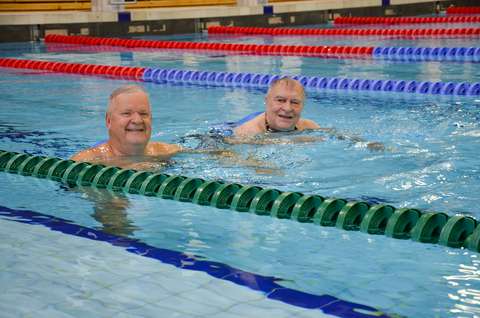Impact of the senior sports wristband and the friend service on the mental and physical well-being of senior citizens in Espoo
Several pilot studies have been carried out at the Sports and Exercise Unit, the results of which guide the planning of the activities and the related decision-making. In 2023 and 2024, In 2023 and 2024, we have examined the impact of the +68 Sports Wristband and the related friend service on the well-being of senior citizens. Espoo has been implementing an impact-based management programme in cooperation with VTT Technical Research Centre of Finland since 2019.
The +68 Sports Wristband allows the user to access Espoo’s swimming pools, gyms, guided gym equipment training, senior exercise groups and courses, and use archipelago boats free of charge. Wristband users can bring along an adult friend to swimming pools, gyms and archipelago boats free of charge if they are training or exercising independently.
In addition to the number of visitors to sports facilities and services, we also surveyed experiences of the +68 Sports Wristband and its impact. We conducted a survey of approximately one year and collected responses in June 2023, November 2023 and April 2024.
The survey participants were divided into three groups. Participants in the base group did not use the senior sports wristband or the included friend service. Participants in the first control group received only the wristband, and those in the second control group had access to both the wristband and the friend service.
The results help to better understand the needs and wishes of senior residents regarding sports services. They help us plan the necessary measures, such as guidelines, that support the well-being of and an active lifestyle for senior citizens. We also received good data on what kind of physical activity they engage in together with a friend.
Key observations of the senior exercise survey
Use of the sports wristband and exercise friend:
- Approximately 70% of the subjects in the control groups have used the sports wristband, and almost half of them used the wristband every week. Fewer uses were often justified by exercising in other ways or not having enough time.
- 40% of group 2 has used the friend service. Reasons for fewer uses included issues with schedules and the friend’s lack of interest.
- Three out of four of those who used the friend service used the service in swimming pools. Approximately half of those using the friend service took a friend along on an archipelago boat trip and one in three to the gym.
- Those who did not utilise the friend service mostly justified their decision by saying that there was no need for the service or that they had scheduling problems with their friend. On the other hand, the lack of a suitable friend was also a significant reason for not using the service.
- The exercise friend was often the same person, most often their spouse, a friend or their child.
Quality of life, health and functional capacity:
- Almost 90% of Espoo seniors who participated in the survey feel that their quality of life is very good or good. More than 90% are satisfied with their functional capacity and more than 80% with their health.
- People who used the sports wristband weekly often had a better quality of life than those who used it less often.
- Almost 80% are satisfied with their physical activity.
- Almost 70% of those that used the sports wristband feel that their physical activity and well-being have increased because of the wristband.
- The weekly use of the sports wristband is clearly linked to meeting the recommendations for physical exercise. For those who used the wristband at least weekly, the recommendation for physical exercise were met more often than for those who used the wristband less frequently.
Types of sports:
- The most popular sports among seniors were walking, bicycling, swimming and water sports as well as gym and strength training.
- The share of swimming and water sports enthusiasts increased among wristband users in the first follow-up survey but returned to the initial level in the second follow-up survey. Seasonal variation probably contributes to this difference.
- Among those that were given a wristband, gym and strength training increased significantly (approximately 20%) if they had access to the friend service.
- More than 80% of sports wristband users have used the wristband in an indoor swimming pool and/or outdoor swimming pool, more than 40% in gyms and around 30% in archipelago boats.
